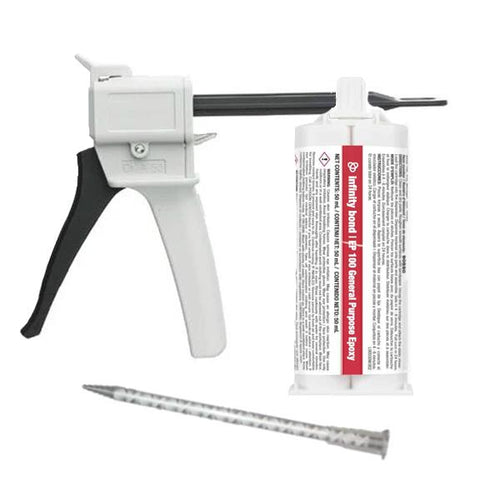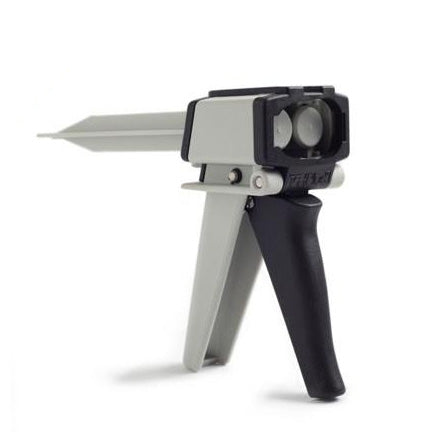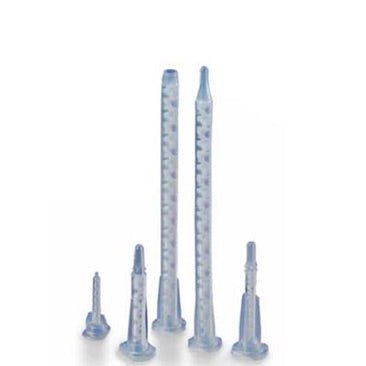Finding the right adhesive for structural bonding applications is critical. The wrong adhesive could lead to bond failure and in some instances, this bond failure could be dire. Consequently, it is imperative to choose the right type of adhesive for the job.
Two potential choices of adhesives for many structural bonding applications are epoxies and polyurethanes. Our team reviews the differences between epoxy versus polyurethane adhesives to help you make an informed decision on the best choice for your application.
Epoxy Adhesives
Epoxy adhesives are usually two-part adhesives made of a resin and a hardener that will begin to cure as a result of a chemical reaction when they are mixed together. Epoxies are best known for their great strength and durable bonds. They also have good resistance to environmental factors and can be used with different substrate materials. Consequently, they are commonly used in harsh or demanding environments such as in the construction, aerospace, marine, and automotive industries.
Pros
Some benefits of epoxy include:
-
Exceptional bonding strength
-
High chemical resistance
-
Heat resistance
-
Moisture resistance
-
Ability to bond to different materials
-
Dielectric properties
Cons
While it depends on the specific product, there are also a few potential cons with some epoxies, including:
-
Limited flexibility and elongation
-
Surface preparation is required
-
Higher viscosities
-
Poor UV resistance
Polyurethane Adhesives
Polyurethane adhesives or PUs can be both one-part and two-part adhesives, but the two-part adhesives are the ones commonly used for structural bonding applications. These adhesives have a high amount of flexibility compared to other types of structural adhesives. They also have a high level of impact resistance that makes them best suited for bonding applications involving high-stress environments and movement.
Pros
There are several benefits to these types of adhesives, including:
-
High amount of flexibility
-
Impact and shock resistance
-
Structural strength
-
Abrasion resistance
-
Water resistance
-
Gap-filling capabilities
-
Able to bond different materials
Cons
There are also some potential downfalls with two-part polyurethanes, including:
-
Surface preparation is required
-
Health and safety concerns
-
Lower resistance to high temperatures
-
May react with humidity
-
Shorter shelf life
Differences Between Epoxy Vs. Polyurethane Glues for Structural Bonding
When choosing between two-part polyurethane versus epoxy adhesives for a structural application, it is important to understand their similarities and differences to make the best choice.
| Property | Winning Adhesive |
| Strength | Epoxy |
| Flexibility and Elongation | Polyurethane |
| Impact Resistance | Polyurethane |
| Chemical Resistance | Epoxy |
| Heat Resistance | Epoxy |
| Faster Open Time | Polyurethane |
In terms of similarities between polyurethane adhesives and epoxy adhesives, there are many. Both two-part adhesives can form strong and durable bonds that make them suitable for structural bonding applications. They can also bond different substrate materials, although some substrates may be better suited to one type of adhesive over the other. Overall, they have many similar properties, including chemical resistance, water resistance, and weather resistance, though in different degrees of effectiveness.
Perhaps the biggest differences between two-component polyurethane adhesives and epoxy glues are in their strength and flexibility. If you are looking for strength, epoxy is the way to go. These adhesives are extremely rigid and strong. While two-part polyurethanes are not as strong as epoxies, they can still provide structural strength.
If flexibility is important, then you want a polyurethane. Because of their flexibility, polyurethanes have a high level of shock and impact resistance that makes them a very durable option for applications where movement is involved. On the other hand, epoxies are rigid with limited flexibility.
While chemical resistance is a property both polyurethane glue and epoxy share, epoxies tend to have better chemical resistance than polyurethanes. Epoxies also tend to have a higher heat resistance than polyurethanes.
When it comes to open times, polyurethanes have a faster cure time than epoxies in general, but there is a lot of overlap. Some epoxies are formulated with 5-minute open times, while others may have 2-hour open times. Similarly, two-part polyurethanes may have open times as short as 1 minute or as long as 45 minutes. Every adhesive is different, so it is important to look at the specific product's datasheet for this information.
How to Choose Between Epoxy Vs. Polyurethane Adhesives
When deciding between a two-component polyurethane and an epoxy adhesive, you need to be mindful of your specific application and needs. Some factor you should consider, include:
-
Bond strength needed
-
Stress requirements
-
Substrate materials
-
Environmental conditions (exposure to UV light, moisture, temperature, chemicals, movement, etc.)
-
Open time
-
Cost
Once you have information on all of these factors, it can help you better narrow down your choice.
Recommended epoxy applications include bonds with:
- Very high strength requirements
- Lower stress requirements/less exposure to movement
- Exposure to chemicals like salt, grease, and oil
- High heat requirements
Some examples of applications where epoxy is commonly used include aircraft and automotive components, electrical potting and encapsulation, concrete repair, and tile installation.
Browse our full collection of epoxy glues.
Recommended two-part polyurethane applications include bonds with:
- High stress and flexibility requirements
- Joint movement
- Sealing requirements
Some examples of applications where structural polyurethanes are commonly used are automotive insulation, boat building, outdoor furniture, woodworking, footwear, and roof sealing.
Browse our selection of polyurethane structural adhesives.
Still Not Sure What You Need?
With over fifty years of experience in the adhesives industry, we have worked with both adhesives extensively. If you still do not know whether an epoxy or a polyurethane adhesive is the best choice for your structural application, we are here to help. Contact us to speak with an adhesives expert who can answer your questions and offer you guidance on your product selection.








